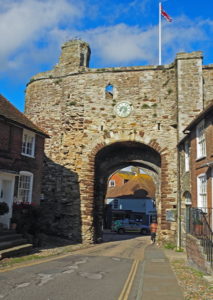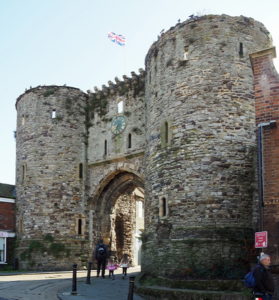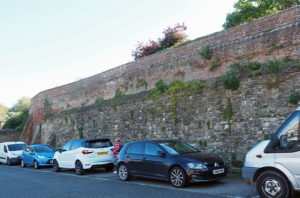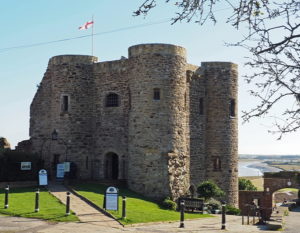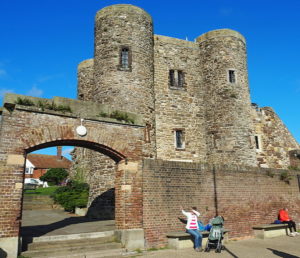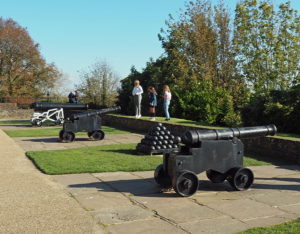To understand Rye, you need to know something about its history…
Rye was an important “harbour”:https://en.wikipedia.org/wiki/Rye,_East_Sussex#/media/File:Kent_Cinque_Ports.svg and safe anchorage, probably as early as Roman times. The Weald was an important ironmaking area and iron ingots were shipped out from here.
By Saxon times, there was probably a small fishing settlement. After the Norman Invasion, the settlement grew as it was close to the main sea route to France. By the C12th it was important enough to have a small mint.
The south east coast had experience many raids and attacks over the centuries and the Cinque Ports were formally established in 1155, to consolidated the defence of the realm. The five original members were Hastings, New Romney, Hythe, Dover and Sandwich. Rye and Winchelsea added later after New Romney got silted up.
The towns had to provide 57 ships for 15 days service to the king annually and provided the professional nucleus of King’s Navy used against against Ireland, Scotland, France, Spain, the Low Countries and also Crusades in the Holy Land. In return the Cinque Ports were granted freedom from taxes and custom duties, trading concessions and rights to hold judicial courts.
After King John was forced to return Normandy to the French in 1205, French raids increased and the French regularly attacked the south coast towns, including Rye.
Ypres Tower was built in 1249 as defence against French Raids. With increasing hostilities, a town wall with ditch and four gates was built in 1329. Only the Landgate survives along with a small section of the wall in Cinque Ports Street dating back to this time.
By 1336, Rye was a royal dockyard and shipyard, and together with Winchelsea, provided half of the ships and mariners for the Cinque Ports.
In a devastating attack in 1377, Rye was almost completely destroyed by fire, and the bells of St Mary’s Church were stolen. The following year a revenge voyage saw the bells returned, along with other previously stolen loot. One of the bells was hung at the end of Watchbell Street and rung as a warning in times of attack.
Violent storms in the C13th cut the town off from the sea and changed the course of the River Rother. By the end of the century, the sea and river had destroyed much of the eastern part of the town and ships used the Strand to unload cargoes. Up to two hundred ships could moor up here and it was lined with warehouses.
Although Rye was considered one of the most important Cinque Ports, constant work was needed to stop the gradual silting up of the harbour and river. By 1570, there were complaints about silt causing fishing boats becoming stranded at low tide. Landowners were gradually reclaiming Marshland, which further reduced tidal flows that were supposed to keep the harbour free of silt.
Rye’s importance declined with the arrival of bigger ships needing deep water ports. Ship building was also in decline as iron making in the Weald had resulted in a drastic decline of suitable timber. By the C17th fishing and smuggling were more important.
Smuggling began in the C14th when a duty was imposed upon wool, cloth and leather exports and on imports of wine. By the late 1600s smuggling was rife throughout the population and became almost impossible to control. Customs men and the military were either bribed or violently threatened and few people were convicted. In the C18th, many of the houses had interconnecting roofs and attics to aid escaping smugglers. Hoards of booty were stored in old vaulted cellars networked by secret tunnels and passages.
Rye continued to decline in importance although there were still some small shipyards providing vessels for local trade. Now the remaining yards provide dinghies and yachts for pleasure use. Boats continue to use the Strand and there is still some fishing with boats mooring along Simmons Quay below Ypres Tower.
The centre of Rye remains compact and virtually unchanged with many of its medieval and later buildings surviving. It is a thriving shopping centre with many small independent shops. Rye is delightful and repays exploring on foot.
